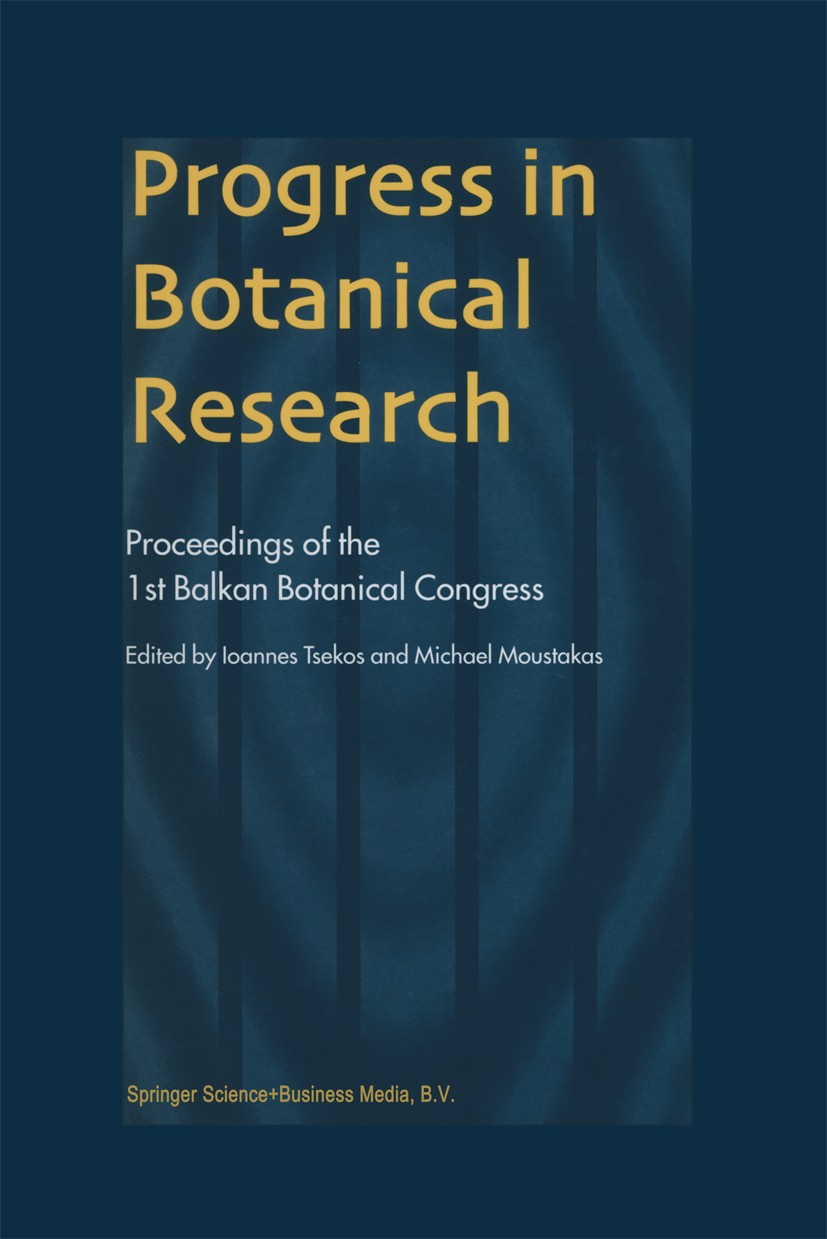| 书目名称 | Progress in Botanical Research | | 副标题 | Proceedings of the 1 | | 编辑 | Ioannes Tsekos,Michael Moustakas | | 视频video | http://file.papertrans.cn/761/760288/760288.mp4 | | 图书封面 |  | | 描述 | This volume is the final document of the 1st Balkan Botanical Congress and comprises after reviewing the full texts of the Congress Lectures submitted by their authors. The articles refer to all branches of plant sciences in the field of pure and applied research. The subjects dealt with in the Congress, and each representing a separate section in this book covered the following areas of interest: I. Taxonomy, geobotany and evolution II. Biochemistry, metabolism and bioenergetics lll. Ecology and ecophysiology IV. Structure and its dynamics V. Genetics, plant breeding and biotechnology VI. Growth, development and differentiation. The Congress was organized by the Department of Botany, Aristotle University of Thessaloniki and the Hellenic Botanical Society. The city of Thessaloniki was chosen by the Organizers since it enjoyed the accolade of the "cultural capital of Europe" for the year 1997. The Thessaloniki Congress has taken on the character of an International Congress since 320 scientists, mainly from the Balkan countries and the rest of Europe (26 countries in all) took part in it. The 11 invited speakers who shared their experience with us, were well-known specialists from a | | 出版日期 | Conference proceedings 1998 | | 关键词 | Transport; biochemistry; biotechnology; enzymes; gene transfer; genetic engineering; metabolism; photosynth | | 版次 | 1 | | doi | https://doi.org/10.1007/978-94-011-5274-7 | | isbn_softcover | 978-94-010-6219-0 | | isbn_ebook | 978-94-011-5274-7 | | copyright | Springer Science+Business Media Dordrecht 1998 |
The information of publication is updating

|
|
 |Archiver|手机版|小黑屋|
派博传思国际
( 京公网安备110108008328)
GMT+8, 2025-12-17 18:21
|Archiver|手机版|小黑屋|
派博传思国际
( 京公网安备110108008328)
GMT+8, 2025-12-17 18:21


